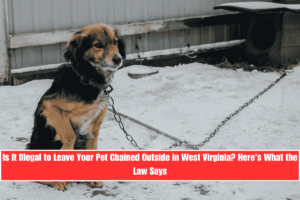In the cold grasslands of Ziebach County, South Dakota, finding a job in winter is almost impossible. This rural area is known as America’s poorest county, where over 60% of people live at or below the poverty line. Most of the county’s population are Cheyenne River Sioux tribal members living on a large reservation.
Let’s look deeper at what life is like here—and what’s being done to improve it.
Life on the Cheyenne River Sioux Reservation
The Cheyenne River Indian Reservation was created in 1889 and covers much of Ziebach and Dewey Counties. The land is mostly open prairie used for cattle ranching, but there are no oil reserves, no casinos, and very little infrastructure.
During the harsh winters, unemployment can reach up to 90% among tribal members. The few who have jobs often travel 80–150 miles to bigger towns like Rapid City or Bismarck. Basic services like healthcare, electricity, and water can be unreliable—especially in extreme weather.
Generations of Poverty
Poverty in Ziebach County is not new. For decades, the area has been listed among the poorest regions in the U.S.. Many families live in run-down trailers or old houses, patched up with whatever materials are available.
After a dam was built on the Missouri River in the mid-1900s, more than 100,000 acres of tribal land were flooded. Since then, Eagle Butte has become the main town and tribal headquarters. But even this central area has very few businesses and limited opportunities.
Few Jobs, Struggling Businesses
The county has only one major grocery store, the Lakota Thrifty Mart, which is owned by the tribe. Other than a few small cafés and fast-food spots, there’s no bowling alley, movie theatre, or entertainment hub.
Some locals have started small businesses, but many struggle to survive. For example:
- A plumbing and heating business tried adding a bait shop and a deli to stay open.
- A flower shop owner depends mostly on tribal funeral aid to stay in business.
Community Support and Efforts for Change
Despite the challenges, a few groups are trying to make things better.
Four Bands Community Fund
This nonprofit teaches residents:
- How to budget
- How to open a bank account
- How to build credit It also supports local entrepreneurs and small businesses with training and guidance.
Tribal Ventures
Started by the tribe, this development group focuses on economic development and long-term planning for job creation and community support.
New Hope with Federal Support
Most jobs in the area are funded by the federal government, which runs:
- The Bureau of Indian Affairs
- The Indian Health Service
- The Bureau of Indian Education
A new $81 million hospital is being built with federal stimulus money. It could bring up to 150 permanent jobs. Another tribal business, Lakota Technologies, has trained local youth and provides data entry and call center work, although many workstations remain empty due to lack of contracts.
In addition, the tribe will soon start receiving interest payments from a $290 million settlement over lost farmland due to Missouri River flooding. The money will help fund infrastructure, education, and development projects.
Looking Ahead: Challenges and Opportunities
There’s no easy fix. Many tribal leaders admit that internal issues—like lack of business skills or fear of outside investment—make progress slow.
“You can have all the heart you want, but you need actual cash and resources,” says Eileen Briggs of Tribal Ventures.
Still, local leaders and organizations remain hopeful. The community’s greatest strength is its people—and the goal is to give them the support, tools, and opportunities they need to succeed.
FAQ
Where is Ziebach County located?
Ziebach County is in South Dakota, mostly part of the Cheyenne River Sioux Reservation.
Why is Ziebach County the poorest in the U.S.?
Due to high unemployment, remote location, poor infrastructure, and a lack of business development.
What is the unemployment rate in winter?
Among Sioux residents, it can reach as high as 90% in winter.
Are there any businesses in Eagle Butte?
Yes, but very few. The town has one major grocery store, a couple of fast-food outlets, and small shops.
What efforts are being made to improve the economy?
Groups like Tribal Ventures and Four Bands Fund are helping locals learn financial skills and start businesses. The tribe also receives federal support and settlements for long-term development.


















Leave a Reply